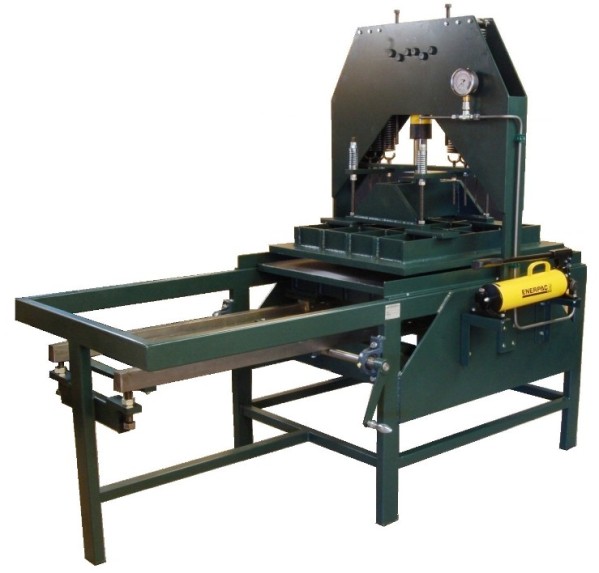|

This is a highly professional press for printing lino- and woodcuts. The upper-platen is moved vertically by a hydraulic cylinder. These presses do resemble to the old hand presses (Columbian, Albion, Washington, etc.). In fact technically there are many similarities. The major difference however is the system to apply force to the top platen. The old presses were all equipped with ingeneous lever systems in order to use human strength as efficient as possible. Modern platen presses can be equipped with hydraulic systems which makes it possible to exercise forces that were never possible with hand presses.
The old presses were limited in size because of the limitations of the technical systems in those days. It took much strenght of the printer to print a full size paper. One has to realize that normally a printer only dealt with a page of set type. If that printer had to print a woodcut with the same size, he would need even more strength. The part of a woodcut that is in actual contact with the paper is generally bigger that the part of a page set in type that is in contact with the paper.
Polymetaal adapted the old presses to modern techniques. We came up with the VPL-80x100, but in four variations. The maximum space between the two platens is 14 cm. There is no need to go up and down those 14 cm every time you print. The vertical momevent of the top platen can be limited with the two screws visible on top of the press. as discribed in the table here above. This press, the VPLMR-80x100 has a slidable lower platen, making it much easier to ink and apply the printing forme. The printing forme can be fixed on the lower platen with the aid of screw holes on the circumference of the lower platen. The top platen is driven by a hydraulic cylinder, connected to a manually driven pump. This pump has an automatic "two speed system"; if the lever is activated the top platen will come down at a higher speed under low pressure. As soon as the top platen "feels" any resistance (touching the forme) the pump will switch automatically to lower speed and high pressure.
All presses have some features in common;
- The platens are made of very thick welded steel. They resist much more pressure than the cast iron platens in the old days. The platens have been treated in an oven to release all inside tensions and surface planed afterwards. This guarantees that the platens will never change shape.
- Through a special design, damage to the upper platen is prevented if it is lopsided as a result of incorrect use.
- De vertical movement of the upper platen is driven by a hydraulic cylinder with a maximum capacity of 25.000 kgs.
- The maximum clearing between the platens is 14cm. The distance between the platens can be set to any lower value by adjusting two vertical screws. The printing speed is improved if this value is not moore than needed for the printing job.
|